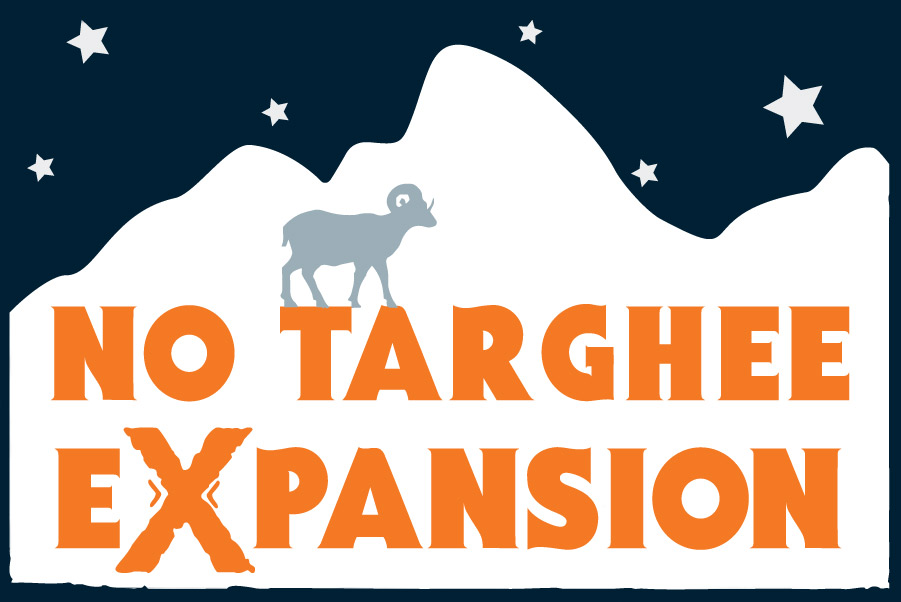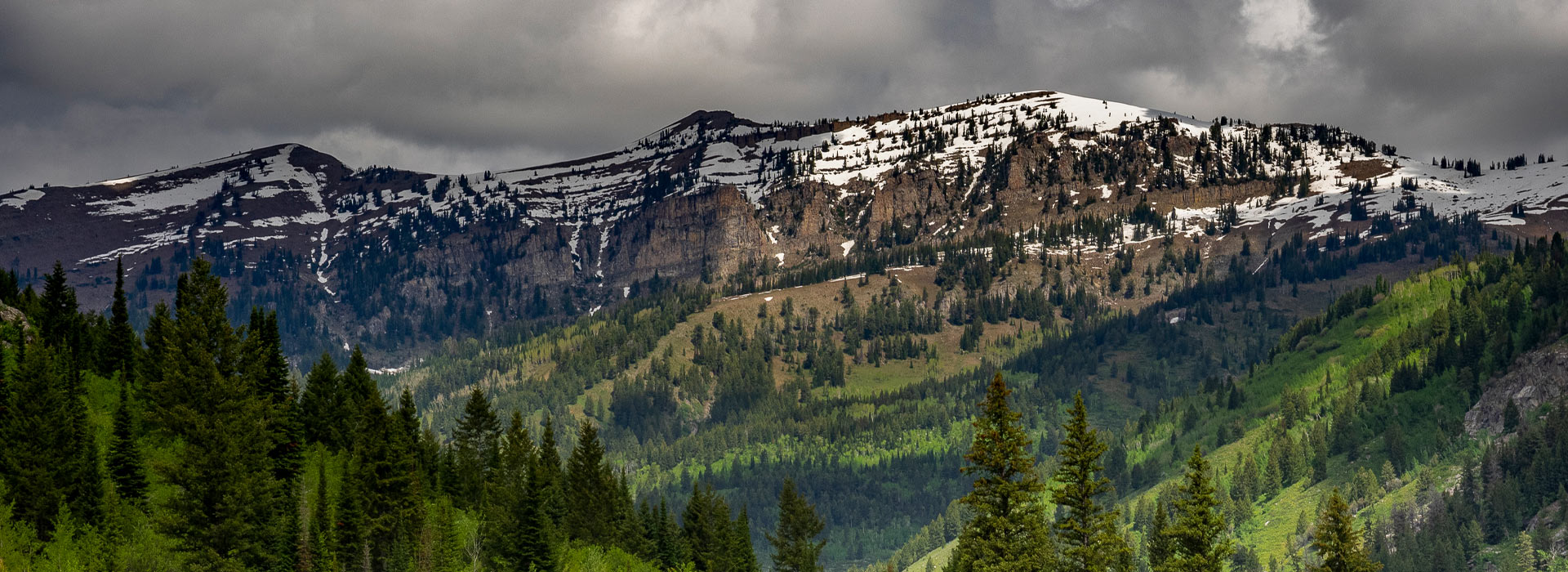Grand Targhee’s proposed expansion is being evaluated by the US Forest Service via an Environmental Impact Statement.
With the exception of 120 acres of private land in the base area, Grand Targhee Resort is located on public lands managed by the Caribou-Targhee National Forest. The resort operates under a Special Use Permit (SUP) issued by the Forest Service. In addition to issuing a SUP and charging a use fee based on a ski area’s income derived from use of the national forest, the Forest Service requires ski areas to prepare Master Development Plans (MDPs). The MDP articulates a resort’s long term vision and identifies proposed changes and developments within - and beyond - the permit boundary.
Grand Targhee completed a new MDP in 2018, which envisions a major expansion onto National Forest lands and significant development within the existing resort footprint. In 2020, Grand Targhee asked the Forest Service to approve implementation of the projects articulated in their 2018 MDP. In response, the Caribou-Targhee National Forest is evaluating the proposal through an Environmental Impact Statement (EIS).
Grand Targhee is seeking approval to expand into Mill Creek (Mono Trees) and Teton Canyon (South Bowl), both of which are outside of the current Special Use Permit boundary and would require changing the 1997 Targhee National Forest Plan to allow resort development in an area currently protected to maintain high scenic values.
In addition to analyzing Grand Targhee’s proposal (the “proposed action”), the Forest Service has developed several “alternatives” that it feels would be responsive to Grand Targhee’s application and are based on input received during the initial (2020) public comment period. The EIS analyzes the environmental effects of each alternative, including the proposed action.
The 2018 MDP also envisions significant commercial and real-estate development within the privately-owned base area, but approval of those proposals falls under the jurisdiction of Teton County, WY, not the Forest Service. Likewise, the recently-constructed Colter Lift was approved under a prior Forest Service process and is outside the scope of this EIS.
Grand Targhee’s extensive development plan is being evaluated via a US Forest Service environmental impact statement.
Targhee’s plan involves expansion into Millcreek and Teton Canyon which are outside of their Special Use Permitted (SUP) area and will require amending the 1997 Forest Plan with in the Caribou Targhee National Forest.
The “South Bowl” expansion into Teton Canyon would involve three new lifts, new ski runs, a road, warming hut and a pit toilet. In order to make the area “safe” ski patrol will have to perform avalanche mitigation. The Lighting Tree expansion (Mono Trees) will have a ski lift, new road and runs into Millcreek Canyon. This would be a 50% enlargement of their existing ski terrain. None of this has been approved.
In Targhee's current permit area, this plan proposes a new lift into Ricks basin, upgrading and realigning the Shoshone lift, and a new lift on Fred’s called Crazy Horse. There will be many new trails and grading of existing trails.
More lights are proposed on the mountain for longer training of athletes during winter months and for more snowmaking. This snowmaking would require additional wells.
A 6000 ft square restaurant is proposed just south of top of Dreamcatcher. It will be visible day and night from the valley, wilderness area, and peaks in Teton Park. An additional restaurant is proposed at the top terminal of Sacajawea.
South Bowl
There should not be chairlifts, roads, or avalanche control in the North Fork of Teton Canyon.
The “South Bowl'' expansion off of Peaked Mountain into Teton Canyon would involve construction of a new chairlift and a new road to service the lift, a new warming hut and vault toilet on Lighting Ridge, and a ski patrol facility on Peaked Mountain. The South Bowl expansion would also require cutting new ski runs across the western part of South Bowl and using heavy machinery to smooth out the terrain throughout much of the area. In order to make the area “safe”, ski patrol will have to perform significant avalanche mitigation.
This area provides important habitat for many wildlife species. National Park Service biologists have documented the following wildlife species in South Bowl: bighorn sheep, mountain goats, mule deer, moose, elk, mountain lion, black bear, coyote, fox, pine marten, and other small mammals and birds. When the Forest Service first announced that they were considering this expansion, the Park Service commented that the proposed South Bowl expansion area includes movement corridors for all these species. A recent study by the World Wildlife Fund reported that wildlife populations have decreased worldwide by 70% in the last 50 years. We are so blessed to have abundant wildlife in our backyard and should respect - not encroach upon - their habitat.
Development in South Bowl would be visible from the most popular trails on the west side of the Tetons, in the Jedediah Smith Wilderness and in Grand Teton National Park. These include the South and North Fork of Teton Canyon, Face Trail, Devil Stairs, Beard Wheatfield and Shelf Trail. People hiking or backcountry skiing into the Jedediah Smith Wilderness or South Leigh Canyon from the ski resort would have a greatly diminished experience if South Bowl were to be developed.
Ski resort development would be an affront to wildlife, wilderness, and the people who cherish this place. Furthermore, because of climate change, which is leading to warmer and drier winters, this south-facing area could be unskiable in the near future. Is short-term resort use worth all that would be lost? The Forest Service should deny Grand Targhee’s request to expand into South Bowl.
South Bowl
There should not be chairlifts, roads, avalanche control, or guided skiing in the North Fork of Teton Canyon.
Disturbance of this area with lift towers and tree cutting would be visible from the most popular trails on the W. Side of the Tetons. This includes the South and North Fork of Teton Canyon, Face Trail, Devil Stairs, Beard Wheatfield and Shelf Trail. Folks hiking to the wilderness or South Leigh Canyon from the ski resort on a magnificent ridge would have a greatly diminished experience if the South Bowl were developed. The Teton Mountains are iconic and belong to all Americans.
National Park Service biologists have documented the occurrence of the following wildlife species on the north side of Teton Canyon in October and November with fixed trail cameras and tracking: big horn sheep, mountain goats, mule deer, moose, elk, mountain lion, black bear, coyote, fox, pine martin, and other small mammals and birds. They stated that the proposed South Bowl expansion area includes movement corridors for all these species. A recent study by the World Wildlife Fund reported that wildlife populations have decreased worldwide by 70% in the last 50 years. We are so blessed to have this wildlife in our backyards and should give them room.
Encroachment from a ski resort into this area would be an ugly insult to humans, wildlife, and wilderness.
Mono Trees
There should not be chairlifts, glading, or roads in the Mono Trees Area
The “Mono Trees” expansion, below the current Sacajawea Lift, would involve construction of a new chairlift similar to the recently-constructed Peaked Lift, along with a new road to service the lift and the cutting and glading of 5 new ski runs. Neither the Mono Trees area nor South Bowl currently have any roads, trails, or other development.
The Mono Trees expansion would be harmful to many wildlife species that depend on the cover its thick forests provide. Currently, the Caribou-Targhee National Forest prohibits entry to the popular Mill Creek Trail during winter months to protect wintering elk, deer, and moose. The wildlife will be negatively impacted if this protection is eliminated. The Forest Service should deny Grand Tarhgee’s request to expand into Mono Trees.
Mono Trees
The area requested that expands Grand Targhee Resort (GTR) to Teton Canyon will be harmful to the wildlife. Deer, moose, and bear activity is common in this location. Grand Teton National Forest has already prohibited entry to the popular Mill Creek Trail during winter months to protect wildlife. The wildlife will be negatively impacted if this protection is eliminated. The number of healthy aspen trees and evergreens that would be gladed would affect runoff, erosion and wildlife. Any additional encroachment from the GTR into the Mill Creek Trail area should be denied for it's impact.
In-Bounds Development
Grand Targhee has also proposed many projects within the resort’s current boundaries. These include:
Chairlifts
In Targhee's current permit area, this plan proposes to:
- Replace the Dreamcatcher lift with a Chondola.
- Upgrading and realigning the Shoshone lift
- Adding a new chairlift on Fred’s Mountain called Crazy Horse
- Adding a North Boundary Lift to provide access to the new terrain from the North Boundary Traverse down to Rick's Basin
Trail Development
- Significant amounts of glading and grading
- Development of many new ski runs, Nordic, snowshoeing, fatbiking, downhill biking, hiking, and multi-use trails
New alternative (non-skiing) activities
- Zip line, ropes course, and disc golf course
- Snow tubing facility
Lighting
- Additional lighting for night skiing
Buildings
- A 6,000 square foot (plus 3,000 to 4,000 sq ft. deck) restaurant/bar/restrooms ski patrol facility on top of Fred’s Mountain, just south of the top of the Dreamcatcher lift.
- A 5,000-6,5000 square foot (plus 2,000 to sq.ft deck) restaurant/bar/restrooms at the top terminal of the Sacajawea lift.
- A 1,500 square foot (plus 2,000 sq ft. deck) yurt with restaurant and restrooms at the top of the Shoshone lift.
- A warming cabin and vault toilet in Rick’s Basin.
Snowmaking
- Increase snowmaking coverage by an additional 57 acres.
- Snowmaking is fueled by groundwater, so an increase will require drilling additional wells.




